Donauradweg: Melk to Dürnstein 31km
Monday, May 13, 2013
 Durnstein, Lower Austria, Austria
Durnstein, Lower Austria, Austria
May13, 2013
Melk to Dürnstein 31km (809 km total)
Sun followed by clouds, brief hail, then mostly clouds with spots of sun!! 16C
Pension Altes Rathaus. €61+ 1.50 pp Tax pp darling place right through port in Rathaus
Wine Country of Wachau
Today we cycled through that famous wine country of Wachau, the stretch of valley bordered by mountains between Melk and Krems which has preserved monasteries, castles, ruins, villages and winegrowers' vineyards who's basic layouts date to the 11th and 12th centuries.
The stretch between Melk and Vienna is the most popular stretch of the Donauradweg too. It is another reason we don't mind taking our time and riding short days.
My sister Yolanda is meeting us in Vienna on the 19th. She'll join us for the Vienna to Budapest stretch. We reserved a hotel in Vienna on the 16th so that will give us three days to explore that great city.
Woman of Willendorf
We stopped at the discovery 'site’ of Venus of Willendorf, aka Woman of Willendorf. An 11 cm tall (4.3 inches) prehistoric oolitic limestone statuette, estimated to be between 22000 and 40000 years old, was found at this site in 1908 by a workman named Johann Veran when the railroad was being built. The statue is an image of overweight woman with acorn like breasts. It is thought to be a fertility symbol but no one knows for sure.
The discovery site is a short walk up a small road where a 2006, 15 square meter, archaeological ‘dig’ on the hillside is displayed showing layers in the earth formed over the recent 40000 years. It seems like more should have happened geologically in those 40000 years. A giant facsimile of the Venus is standing a few meters away.
The actual statuette is displayed in its own room in the Museum of Natural History in Vienna.
Cobble Stone Streets and Vineyards
From there, the radweg took us through lush undulating landscape past vineyards terraced on the mountainsides and castles perched high on mountaintops. We rode through picturesque villages with narrow cobble stone streets, many dating back hundreds of years. Wisteria was draping over arched doorways and fences. The wildflowers along the way are more varied in color with purple lupine, pink clover, white daisies and red poppies showing up here and there in patches.
The town of Spitz was one of our favorites. It had lots of charming Pensions, "Zimmer Frei" signs and cozy restaurants. It has a cute little train station with bike rental place.
The Oldest Parish Church in the Danube Valley
We stopped for lunch on bench next to the Wehrkirche St. Michael (defense church of Saint Michael). In the 10th century, the Christians established a church at this pagan rituals site along the Danube, presumably to establish dominance over the sacred area.
......The church was expanded in the 15th century and the information board indicated some of the 10th century construction can still be seen. It wasn't clear to us which parts date to which eras. In any case, the church and cemetery are charming as is and well worth a brief visit.
Black clouds had threatened us for a long time and finally our luck ran out and they let loose. To our surprise, we got briefly pummeled by hail as the rain was beginning. Neither the hail nor the rain lasted long.
He was known as King Richard Cœur de Lion, or Richard the Lionheart
We continued through the vineyards and villages and soon spotted the Burgruine Dürnstein Ruins silhouetted on top of mountain ahead of us. And soon we could see the town of Dürnstein, with its blue steepled church at the Donau's edge below.
A short steep climb away from the river road landed us in the old town of Dürnstein where a small archway through the Rathaus led us to our pension der Altes Rathaus. We walked up the winding stone staircase to the front door. We were shown to our rooms on the second floor and overlooking the back of the rathaus (town hall) and the blue steeple of the church.
....It was about 2 pm so we decided to hike to the ruin where English King Richard the Lionheart had been held captive in a tower in 1192. We took the steep trail leading up behind the village (turning left just before the town gate.) This trail afforded great views as we got higher and higher.
The main attraction of Durnstein (Dürnstein) is the ruins of the Schloß (castle) Kürnriger in which Richard I, King of England, was held prisoner for a year after returning from a Crusade. His ransom was used by the Duke of Babenberg to build the city walls of Vienna.
We all made it to the way top of the crumbling castle. The 360 degree view from there was incredible. We could see the huge Göttweig Abbey (Stift Göttweig), a Benedictine monastery founded in the 11th century across the Danube from Krems on mountaintop. Only briefly did the sun peek through opening in the clouds so that I could take picture of it. On the way down, we took the longer and more developed path back to town was lined with signboards with factoids in both English and German and illustrations of the time period that the castle was occupied.
Wine Tasting Too!
We stopped for a tasting of two local white wines then continued on exploring the town. We followed narrow cobblestone street down and through tunnel to reach the Donau and the front-side of the church. We then backtracked to where we had entered town so we could take some pictures of the lovely main street, with its lovely homes and businesses now aimed at tourists.
Bad Experience at Pension Stockingerhof
The few eating establishments near our pension were closed on Mondays or open only at lunch time. We made our way out of the historic part of Dürnstein to the worst dinner experience of our trip.
Pension Weingut Stockingerhof looked like a typical pension cum restaurant and we went inside happy that they were open. The menu appeared reasonably priced for the area and more than a bit lopsided toward protein. We asked if they had any veggies. ‘Yes, we can bring asparagus.’ I ordered a smoked meat plate, Dave the ribs, & Hiro and Junko settled for soup and asparagus. I asked if the dishes come with anything. ‘We can bring bread, if you like’. As we were finishing, the proprietor came to check on us an asked how we like our meals. I frowned and told him the meat plate was too heavy for me. He lightly replied that I should not have ordered it. He was right.
We were then presented a bill for €64. Huh? We hadn't ordered many items. The ‘off menu’ items were exorbitant! Nine rolls at €1 each! The plate of five pieces of asparagus with a potato was €13. The few bites of smoked meat I tried had upset my stomach. The rip-off pricing added to my anguish. Our eyes got big as we each examined the bill but no one wanted to make a scene. We should have asked before we ordered. Stockingerhof probably pulls this king of thing on all their tourist customers. They won’t seem them again anyway. But hey, they are on TripAdvisor!
Junko and Hiro write;
Dürnstein
MelkからKremsまでをバッハウという。ドナウ川全長約3000キロのうちこのバッハウ30キロ間が最も美しいと言われている。つまり城と僧院と葡萄畑が次々と眼前にひろがり、あっというまにカメラのバッテリーがなくなる。葡萄畑の中を自転車で走りぬける。教会の尖塔が現れては消える。ドナウ川を観光船がゆく。デルンシュタインに着いてその昔十字軍に参加した英国のリチャード王が幽閉されたという城跡のてっぺんまで歩いて登ってドナウの流れを見下ろした。なんという景色。城をこんな急峻
な山の上に築いたなんて。足がすくむほど怖い。社会見学のドイツ人の子供達に日本語でコンニチワと声をかけられ、コンニチワと返して妙に暖かい気持ちになれた。
__________________________________
References:
....1) The Danube Cycle Way; Donaueschingen to Budapest by John Higginson
... 2) Bikeline Maps & Guides; Donau-Radweg 1, (5 books in the series)
Our plan in a nutshell; 2900 total kilometers at 50 km per day - 2 days riding for 1 day off for a total of 58 riding days & 90 total days - April to July, 2013 :)
Other Entries

 Durnstein, Lower Austria, Austria
Durnstein, Lower Austria, Austria
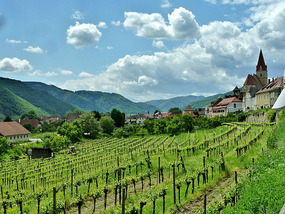
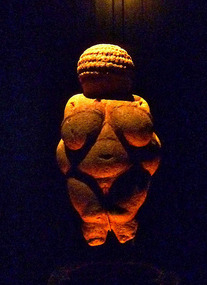
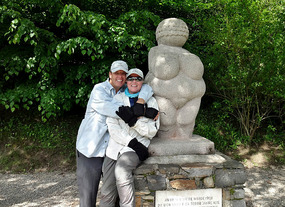
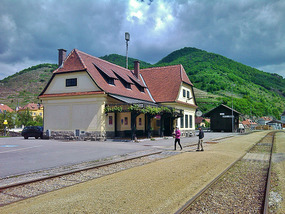
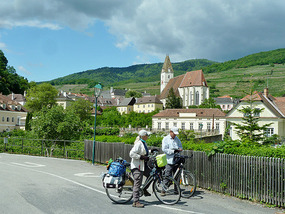
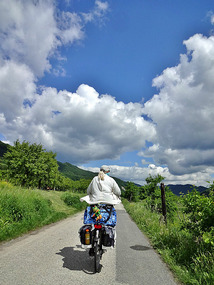
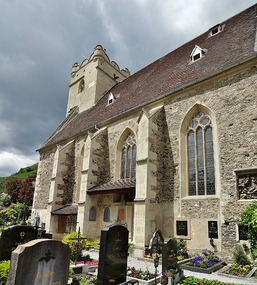
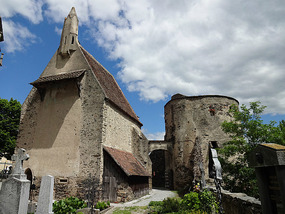
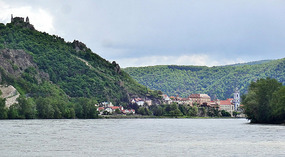
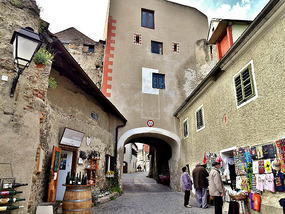
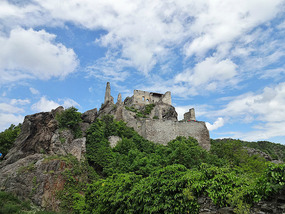
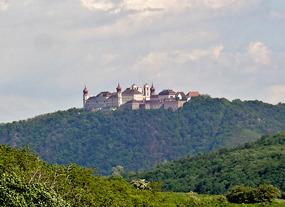
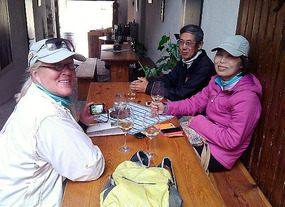
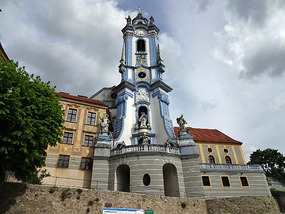
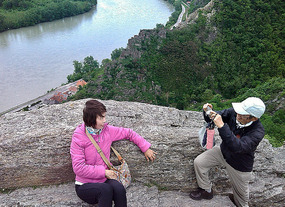








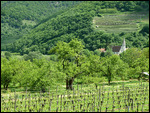
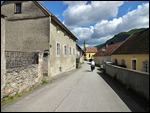
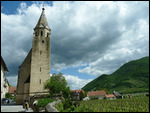
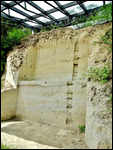
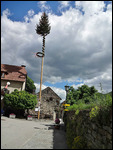



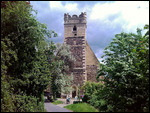
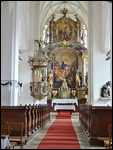
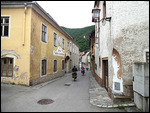
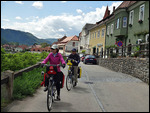
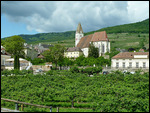
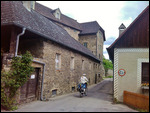

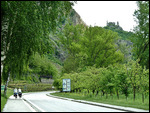

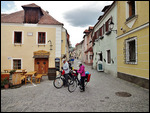
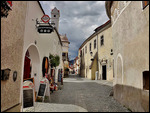
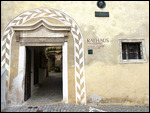
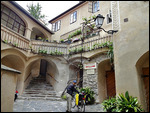


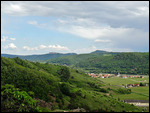
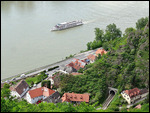
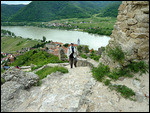
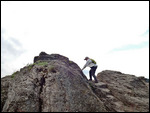

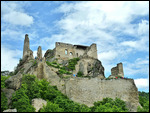

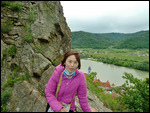

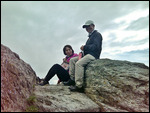
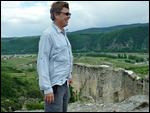
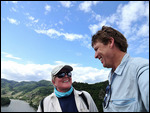


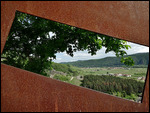
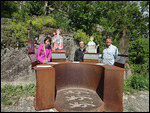

2025-05-23